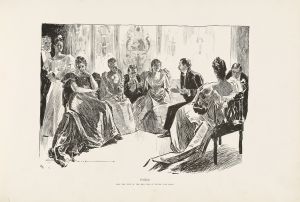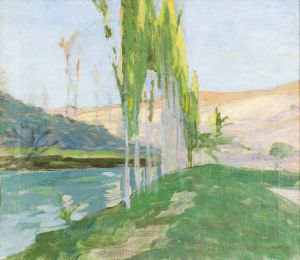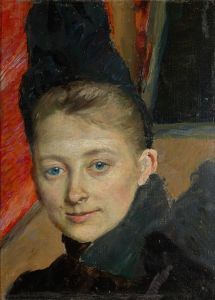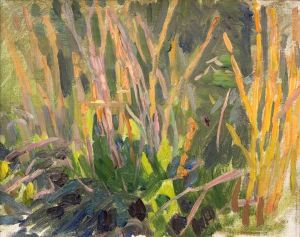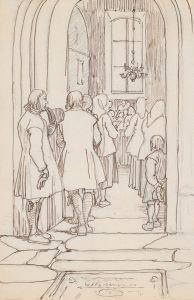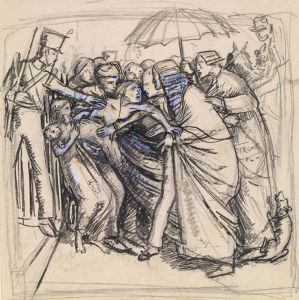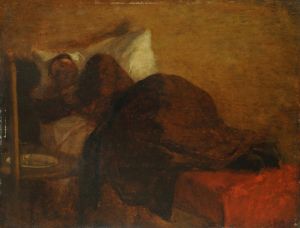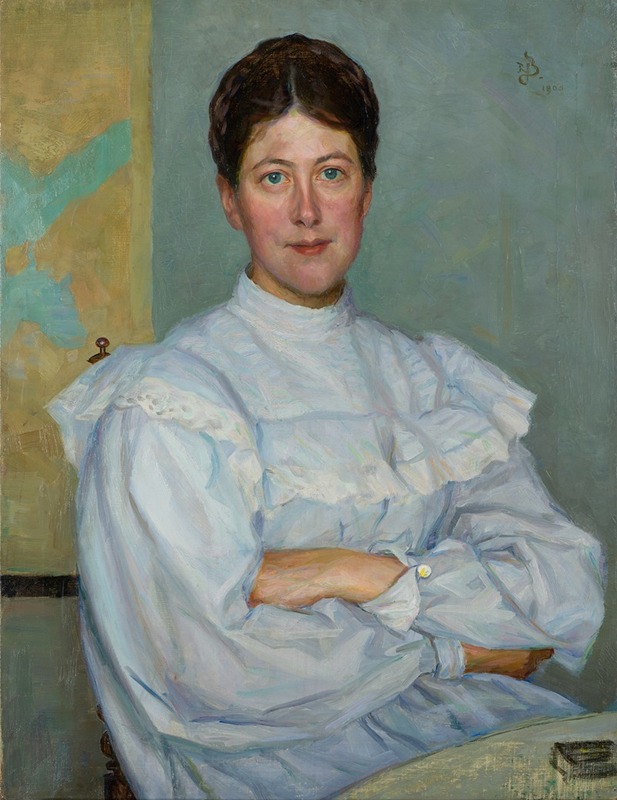
Portrait of Gerda Bergh, The Artist’s Second Wife
A hand-painted replica of Richard Bergh’s masterpiece Portrait of Gerda Bergh, The Artist’s Second Wife, meticulously crafted by professional artists to capture the true essence of the original. Each piece is created with museum-quality canvas and rare mineral pigments, carefully painted by experienced artists with delicate brushstrokes and rich, layered colors to perfectly recreate the texture of the original artwork. Unlike machine-printed reproductions, this hand-painted version brings the painting to life, infused with the artist’s emotions and skill in every stroke. Whether for personal collection or home decoration, it instantly elevates the artistic atmosphere of any space.
Richard Bergh's "Portrait of Gerda Bergh, The Artist’s Second Wife" is a notable work by the Swedish artist, who was an influential figure in the Swedish art scene during the late 19th and early 20th centuries. Richard Bergh was born on December 28, 1858, in Stockholm, Sweden, and became known for his contributions to the Swedish National Romantic movement. His works often depicted themes of nature, national identity, and personal relationships, reflecting the cultural and artistic currents of his time.
The portrait in question features Gerda Bergh, Richard Bergh's second wife. Gerda was an important figure in Bergh's life and his art, serving as a muse and subject for several of his works. This particular painting is a testament to their personal relationship and Bergh's skill in capturing the essence of his subjects. The portrait is characterized by its attention to detail and the emotional depth conveyed through Gerda's expression and posture.
Bergh's technique in this portrait reflects his academic training and his exposure to various artistic influences. He studied at the Royal Swedish Academy of Arts in Stockholm and later traveled to Paris, where he was influenced by the French art scene, including the works of the Impressionists and the Symbolists. These influences are evident in his use of light, color, and composition, which combine to create a sense of intimacy and realism in the portrait.
The painting is also notable for its composition and use of color. Bergh employs a palette that enhances the natural beauty of his subject, using soft, muted tones that complement Gerda's features. The background is often understated, drawing the viewer's attention to Gerda herself and allowing her personality to shine through. This focus on the subject is a hallmark of Bergh's portrait work, where he sought to capture not just the physical likeness but also the inner life of his sitters.
Richard Bergh's work, including this portrait, played a significant role in the development of Swedish art during a period of national and cultural awakening. His portraits are celebrated for their psychological depth and technical proficiency, and they continue to be studied and admired for their contribution to the understanding of Swedish cultural identity.
"Portrait of Gerda Bergh, The Artist’s Second Wife" is housed in a collection that reflects Bergh's legacy as a leading figure in Swedish art. His works are part of the permanent collections of several major museums, where they are appreciated for their historical significance and artistic merit. Through his portraits, Bergh not only documented the individuals who were part of his life but also contributed to the broader narrative of Swedish art history.
In summary, Richard Bergh's "Portrait of Gerda Bergh, The Artist’s Second Wife" is a significant work that exemplifies his skill as a portraitist and his ability to convey the emotional and psychological depth of his subjects. It remains an important piece within the context of Swedish art and continues to be appreciated for its artistic and historical value.





